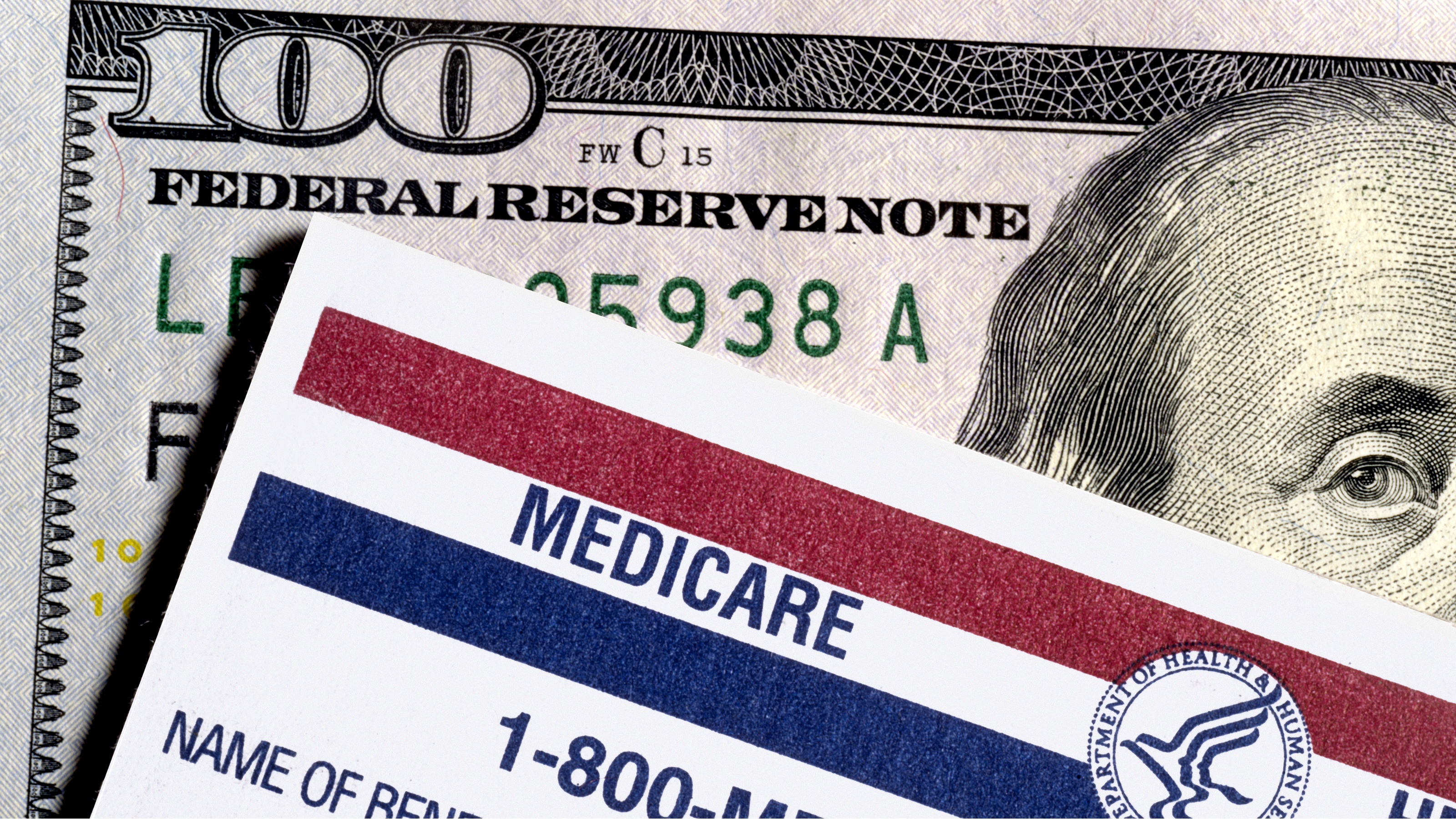Timing Is Everything for Roth Conversions: An Expert's Guide to the Right Strategy
Understanding the nuances of Roth conversions can help you avoid forking over more money in taxes than you need to.


It’s such a common occurrence that financial advisers consider November and December — the last months in which most tax actions will count for the current tax year — to be “Roth Conversion Season.”
Clients looking to reduce their tax burden in retirement often rush to do so during the holidays because, at year-end, their overall tax picture for the year is clearer, letting them maximize their Roth conversions without causing unintended damage to their current tax bill.
It’s important not to be caught flat-footed, though: Start thinking about Roth conversions now rather than scrambling to decide what to do in the middle of the holiday season.

Sign up for Kiplinger’s Free E-Newsletters
Profit and prosper with the best of expert advice on investing, taxes, retirement, personal finance and more - straight to your e-mail.
Profit and prosper with the best of expert advice - straight to your e-mail.
On its surface, a Roth conversion is simple: Move assets from a tax-deferred account, on which you would owe taxes when you withdraw money in retirement, to its Roth equivalent, where you pay taxes now but enjoy tax-free growth and withdrawals.
The Kiplinger Building Wealth program handpicks financial advisers and business owners from around the world to share retirement, estate planning and tax strategies to preserve and grow your wealth. These experts, who never pay for inclusion on the site, include professional wealth managers, fiduciary financial planners, CPAs and lawyers. Most of them have certifications including CFP®, ChFC®, IAR, AIF®, CDFA® and more, and their stellar records can be checked through the SEC or FINRA.
Why convert to a Roth?
Regular tax-deferred retirement accounts such as traditional IRAs and 401(k)s have been popular for decades. Workers save into tax-deferred accounts on the assumption that when they retire they’ll be in a lower income tax bracket and therefore pay less in taxes on the money they’ve saved.
While that assumption sometimes proves true, there are many factors that could cost you more money by employing a tax-deferred savings strategy. Unlike Roths, traditional tax-deferred accounts have required minimum distributions (RMDs).
Once you reach RMD age — 73 for those born in 1951 through 1959 and 75 for those born later — the government requires you to withdraw a portion of your account each year.
The government’s objective is easy to understand: You deferred taxes on those accounts, and they want to collect those taxes eventually.
The government uses a calculation based on your life expectancy to determine how much money you must withdraw each year, whether you need it or not. The larger your account balance, the more you will have to withdraw and pay taxes on.
Tax policy could change decades down the road
Even if your compensation is modest throughout your career, if you save diligently into your 401(k), you could have a significant amount of money when you retire. It’s entirely conceivable that a 401(k) with $10,000 in it early in your career could hold more than $150,000 by the time you retire.
This raises an important question: Would you rather pay taxes on your retirement savings now, or wait and pay taxes on potentially 10 times that amount years from now?
There’s also tax policy to consider. The Tax Cuts and Jobs Act (TCJA) has put us in one of the lowest-income-tax environments in history.
Looking for expert tips to grow and preserve your wealth? Sign up for Building Wealth, our free, twice-weekly newsletter.
Even though the reelection of President Trump and a Republican-leaning Congress means these tax reductions are more likely to be extended, it would be surprising if tax rates remained this low decades into the future.
In deferring taxes on your retirement savings until retirement, you will have more money to be taxed due to growth and potentially a higher tax rate due to policy changes. It’s not hard to see how tax deferral could cost you more in the long run.
Your age makes a difference, too
There are considerations to discuss with your financial adviser before choosing a Roth conversion. One significant example is that if you are older than 59½, you can pay the taxes for a Roth conversion with money inside the account you are converting.
If you’re younger, paying the taxes with money inside the account would incur a 10% tax penalty for an early distribution. This means you will likely want to pay those taxes with other sources, such as your savings account.
Considering 20% of Americans who earn more than $150,000 per year live paycheck to paycheck, facing a four- or five-figure tax bill could be a tall order. Make sure you will be able to cover the taxes before you do a Roth conversion.
That’s just one example of how Roth conversions can be more complicated than they seem — the wrong timing and strategy can cost you money. It’s important to work with a financial adviser to determine whether a Roth is right for you.
Related Content
- How the IRS Taxes Retirement Income
- Financial Fact vs Fiction: This Roth Conversion Myth Could Cost You
- From Tax-Deferred to Tax-Free: Navigating Taxes in Retirement
- In What Order Should You Tap Your Retirement Funds?
- You've Saved for Retirement: Now You Need a Safe Income Plan
Profit and prosper with the best of Kiplinger's advice on investing, taxes, retirement, personal finance and much more. Delivered daily. Enter your email in the box and click Sign Me Up.

Alex Astin is registered with the SEC as an Investment Adviser Representative and has taken extensive exams to receive his Certified Estate Planner™ professional designation. Alex also possesses the Series 65 Securities Registration and is a Florida Life/Health Insurance Agent.
-
 If You'd Put $1,000 Into Berkshire Hathaway Stock 20 Years Ago, Here's What You'd Have Today
If You'd Put $1,000 Into Berkshire Hathaway Stock 20 Years Ago, Here's What You'd Have TodayBerkshire Hathaway is a long-time market beater, but the easy money in BRK.B has already been made.
-
 New SALT Cap Deduction: Unlock Massive Tax Savings with Non-Grantor Trusts
New SALT Cap Deduction: Unlock Massive Tax Savings with Non-Grantor TrustsThe One Big Beautiful Bill Act's increase of the state and local tax (SALT) deduction cap creates an opportunity to use multiple non-grantor trusts to maximize deductions and enhance estate planning.
-
 If You'd Put $1,000 Into Berkshire Hathaway Stock 20 Years Ago, Here's What You'd Have Today
If You'd Put $1,000 Into Berkshire Hathaway Stock 20 Years Ago, Here's What You'd Have TodayBerkshire Hathaway is a long-time market beater, but the easy money in BRK.B has already been made.
-
 New SALT Cap Deduction: Unlock Massive Tax Savings with Non-Grantor Trusts
New SALT Cap Deduction: Unlock Massive Tax Savings with Non-Grantor TrustsThe One Big Beautiful Bill Act's increase of the state and local tax (SALT) deduction cap creates an opportunity to use multiple non-grantor trusts to maximize deductions and enhance estate planning.
-
 Know Your ABDs? A Beginner's Guide to Medicare Basics
Know Your ABDs? A Beginner's Guide to Medicare BasicsMedicare is an alphabet soup — and the rules can be just as confusing as the terminology. Conquer the system with this beginner's guide to Parts A, B and D.
-
 I'm an Investment Adviser: Why Playing Defense Can Win the Investing Game
I'm an Investment Adviser: Why Playing Defense Can Win the Investing GameChasing large returns through gold and other alternative investments might be thrilling, but playing defensive 'small ball' with your investments can be a winning formula.
-
 Stock Market Today: Powell Rumors Spark Volatile Day for Stocks
Stock Market Today: Powell Rumors Spark Volatile Day for StocksStocks sold off sharply intraday after multiple reports suggested President Trump is considering firing Fed Chair Jerome Powell.
-
 Callable CDs Have High Rates: We Still Don't Recommend You Get Them
Callable CDs Have High Rates: We Still Don't Recommend You Get ThemInvestors must carefully consider the trade-offs, as falling interest rates could lead to reinvestment at a lower yield and make selling on the secondary market difficult.
-
 High Mortgage Rates Are Holding My Retirement Hostage: Can I Still Downsize and Retire?
High Mortgage Rates Are Holding My Retirement Hostage: Can I Still Downsize and Retire?We ask retirement wealth advisers what to do.
-
 Five Big Beautiful Bill Changes and How Wealthy Retirees Can Benefit
Five Big Beautiful Bill Changes and How Wealthy Retirees Can BenefitHere's how wealthy retirees can plan for the changes in the new tax legislation, including what it means for tax rates, the SALT cap, charitable giving, estate taxes and other deductions and credits.